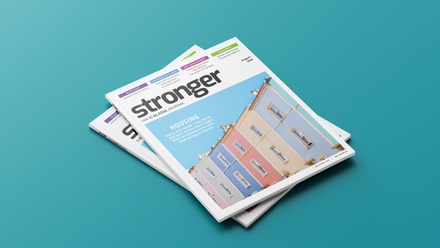Homes England is launching a Help to Build equity loan scheme. It will be available to people in England who want to custom build or self-build their own home.
Introducing Help to Build
In 2022 the Help to Build: Equity Loan will be launched, offering between 5%-20% of estimated land and build costs for those who want to custom or self-build a home in England (and up to 40% for homes built in London).
Taking out an equity loan can support people to access the custom and self-build market in several ways. No interest is charged on the equity loan for the first five years, and it reduces the amount that customers need to borrow on their repayment mortgage once their home is built.
In addition, the Government’s equity loan provides mortgage lenders the assurance they need to offer mortgages with a lower deposit contribution from customers than they’ve been willing to accept historically. In the past, deposit requirements on a self-build mortgage were as hight as 20-25% on self-build but Help to Build customers can make an application with just five per cent deposit.
Councils in England should be aware of potential increases in demand for their services.
There may be more people who register their interest on Right to Build registers, as well as an increase in enquiries about serviced plots of land available for development.
An increase in self building is also likely to be accompanied by an increase in planning applications, either through planningportal.co.uk or directly through council planning portals.
Self-build register
Since 2016, government has asked councils across England to keep a register of people who want to custom or self-build a new home in their area.
This requirement, set out in the Self-Build and Custom Housebuilding Act 2015, aimed to help councils make decisions about planning; housing; the disposal of any land they own; and regeneration.
The pre-pandemic statistics make for interesting reading, with a steady increase in aspiring custom and self-builders joining the registers.
|
Year |
Total number of individuals or groups registered with a local authority |
Increase |
|
2016 |
17,864 |
|
|
2016-2017 |
30,788 |
+12,924 (42%) |
|
2017-2018 |
36,866 |
+6,078 (16%) |
|
2018-2019 |
45,664 |
+8798 (19%) |
|
2019-2020 |
47,714 |
+2,050 (4%) ** |
|
*Register numbers at the end of the first base period at 30 October 2016 |
||
The demand for custom and self-build homes could be much higher. Research by the National Self Build and Renovation Centre (June 2021) revealed that just 43% of their customers had signed a Right to Build register with a council, despite planning to custom or self-build a new home. This steady increase in demand hasn’t gone unnoticed by the Government.
The Housing White Paper (2017) suggested that:
- 1 million expect to buy a building plot, secure planning permission or start/complete construction work on their new home.
- Plotsearch had 100,000 live subscribers
- Rightmove had 400,000 monthly searches on land
- The UK has one of the lowest proportion of self-builds delivered in Europe.
Barriers included:
- Land supply and procurement.
- Access to finance (lenders tend to perceive self-build loans as higher risk).
- The planning process and variations in planning authority approaches.
- General regulation and red tape.
Having personal experience of undertaking a self-build I have a particular interest in developments regarding the subject. One of the biggest problems I personally faced was access to finance. I was fortunate I lived within the catchment area of a local building society willing to fund my project.
The Help to Build: Equity Loan may provide one less barrier for aspiring self-builders.
Residents can apply for Help to Build online, and be approved subject to eligibility, terms and conditions.




